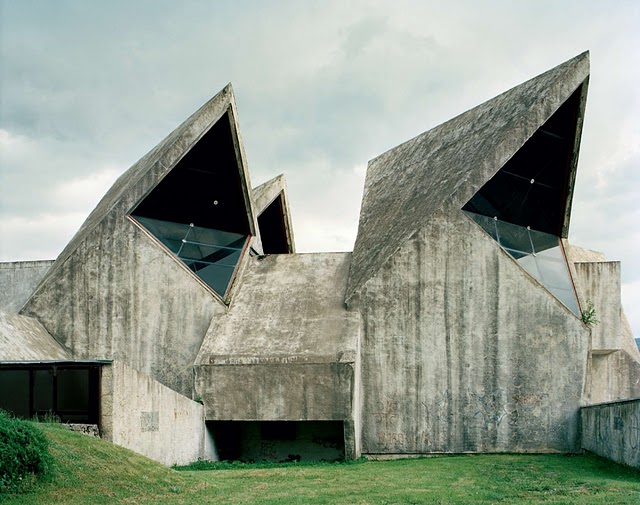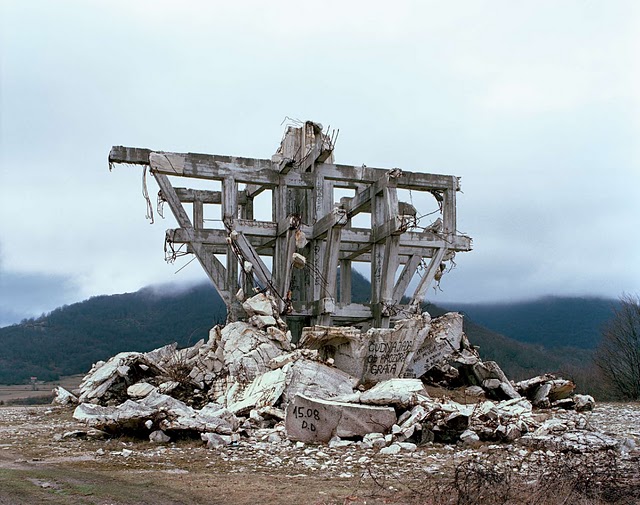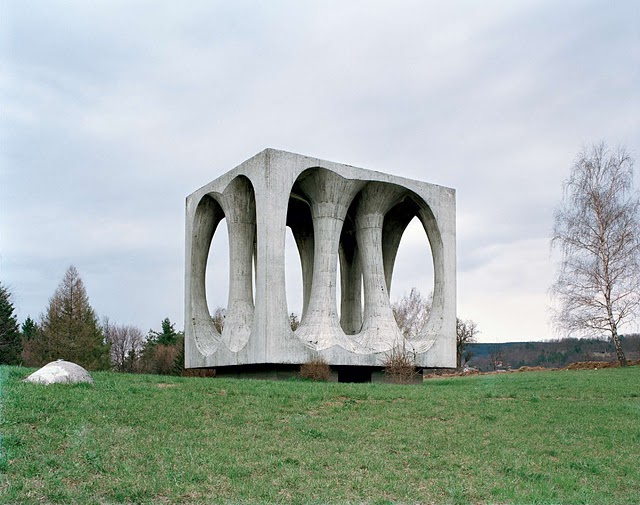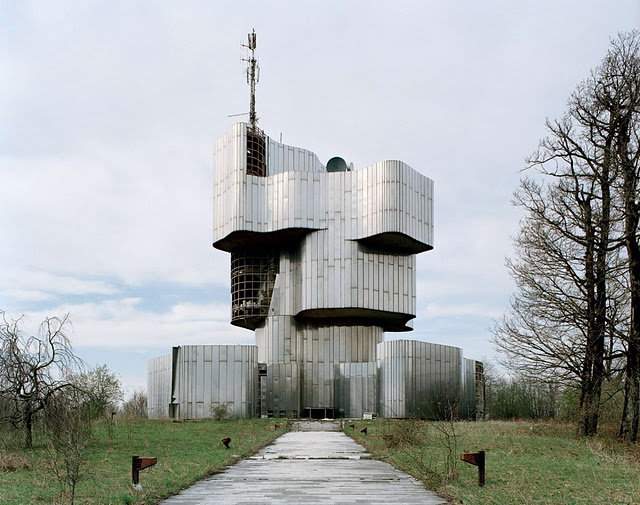I thought a long time about what to say about the 25 WWII monuments built and scattered across the lands of former Yugoslavia. They were commissioned by Yugoslavian president, Josip Tito, in the height of the Cold War Era to commemorate the battles and the concentration camps that lived and breathed on the ground beneath them. You cannot help but be awed by their architectural magnificence. No aspect of their design or conception encompasses any concerns of function or practicality; these sculptural wonders draw their mesmerizing power from the fact that their sole purpose is to evoke two very specific and very intangible things: memory and emotion.
It is easy to rely on obvious symbols and make overt the history and ideology that lurk behind each ode to collective memory. The observer is given no chance to interpret the memory for his or herself and becomes removed from it, detached from it. Instead, each of these monuments is a conceptual interpretation of the memory and the violence of the battle sites they were meant to commemorate (and indeed also the communist fervour and pride of the era). The monuments are form reduced to raw emotion and cast in concrete and stone. I guess that would explain the striking and unrecognizable shapes each monument takes, so informed by, but so alien to the landscapes that surround them. The emotions they illicit are so powerful because their source is so imprecise.
They are now falling into disrepair, and their symbolism continues to shift with each new regime and each new generation. But that is their magic - that they continue to be so many things to so many people. They remain impressive examples of modernist aesthetic, communist pride, historical woe and nationalist triumph.
All photos from CrackTwo














No comments:
Post a Comment